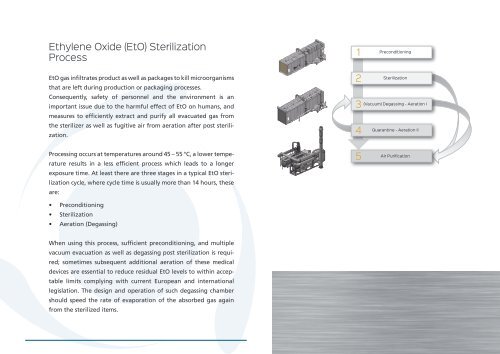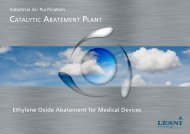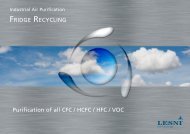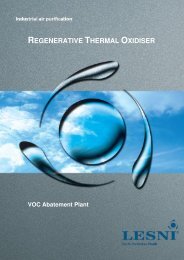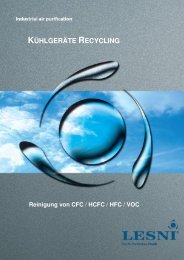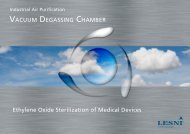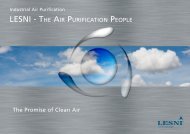Ethylenoxid Sterilisation - Vor- und Nachkonditionierungskammern
You also want an ePaper? Increase the reach of your titles
YUMPU automatically turns print PDFs into web optimized ePapers that Google loves.
Ethylene Oxide (EtO) Sterilization<br />
Process<br />
1<br />
Preconditioning<br />
EtO gas infiltrates product as well as packages to kill microorganisms<br />
that are left during production or packaging processes.<br />
Consequently, safety of personnel and the environment is an<br />
important issue due to the harmful effect of EtO on humans, and<br />
measures to efficiently extract and purify all evacuated gas from<br />
the sterilizer as well as fugitive air from aeration after post sterilization.<br />
2<br />
3<br />
4<br />
Sterilization<br />
(Vacuum) Degassing - Aeration I<br />
Quarantine - Aeration II<br />
Processing occurs at temperatures aro<strong>und</strong> 45 – 55 °C, a lower temperature<br />
results in a less efficient process which leads to a longer<br />
exposure time. At least there are three stages in a typical EtO sterilization<br />
cycle, where cycle time is usually more than 14 hours, these<br />
are:<br />
• Preconditioning<br />
• Sterilization<br />
• Aeration (Degassing)<br />
5<br />
Air Purification<br />
When using this process, sufficient preconditioning, and multiple<br />
vacuum evacuation as well as degassing post sterilization is required;<br />
sometimes subsequent additional aeration of these medical<br />
devices are essential to reduce residual EtO levels to within acceptable<br />
limits complying with current European and international<br />
legislation. The design and operation of such degassing chamber<br />
should speed the rate of evaporation of the absorbed gas again<br />
from the sterilized items.


